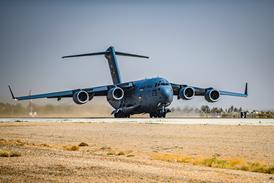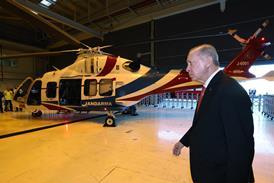BOC Aviation is rapidly extending its reach in the airline and aerospace sector with a product range that has gone far beyond the roots of a business that started out as an aircraft lessor.
“We don’t want to be a single product entity,” says Robert Martin, chief executive of BOC Aviation, which is owned by Bank of China. “We as the BOC group want to provide customers with comprehensive services [across the aviation business].”
In addition to its aircraft leasing business and its role as a major banker to Chinese carriers, the group is now significantly involved in financing top-tier aerospace manufacturers such as Airbus and Boeing. It is also entering the aviation insurance market and has launched a commodities arm to offer fuel hedging services, explains Martin.
“Our strategy is to be the number-one capital provider to the industry from the Asia-Pacific,” says Martin. “The bank has decided to focus on aviation – it is a growth sector and we understand it.” BOC Aviation is seeking to leverage Bank of China’s $2 trillion balance sheet to power this ambitious strategy.
“The ability of BOC Aviation to offer debt financing, operating leasing and hedging alongside each other suddenly makes us more relevant in the [airline] C-suite,” says Martin. “We have already done Airbus A380 financing – for instance, for Emirates, British Airways, Qantas and Air France – and are helping carriers finance their lease structures. We are happy to take debt risk as a group, and support the efforts of the manufacturers in that area.”
Today, says Martin, BOC Aviation has grown into a lessor with an aircraft portfolio worth $10 billion, and a further $10 billion is committed to financing the aerospace supply chain and providing other services to the aviation industry. BOC Aviation is also supported by its parent bank, which has a $10 billion “lending book” with airlines.
Its licence to grow comes from its success in the aircraft leasing world and its ability to raise funding by tapping global capital markets along with traditional export credit agency-supported financings. BOC Aviation has been able to diversify its funding by raising debt in the Asian capital markets, which are becoming a significant source of funding.
“We will continue to tap the debt capital markets to support our growth strategy,” says Martin. “This is especially true as Asian capital markets continue to open up.”
He adds: “BOC is very happy with this business. We have hit our shareholder returns every year for the past seven years.” BOC bought the business, then called Singapore Aircraft Leasing Enterprise, in 2006.
On average, BOC Aviation takes delivery of 50 aircraft a year, with 60-70% of them narrowbody types, says Martin. Its current fleet consists of 233 owned and managed aircraft with an outstanding orderbook of 93 aircraft.
“We are now focused on the pipeline for 2015 and 2016 and are engaged with the manufacturers for mid-sized widebodies and topping up the single-aisle types,” says Martin. With only 22 deliveries on its books for 2015 and 15 for 2016, further orders from BOC Aviation can be expected this year as it looks to achieve its target of 50 deliveries annually.
At the recent Singapore air show, BOC Aviation selected Pratt & Whitney’s PW1100G geared turbofan for 15 aircraft in its backlog of Airbus A320neos, adding to an earlier selection of CFM International’s Leap 1A engine for 10 A320neos ordered last year.
An edit has been made to the third paragraph to eliminate confusion between BOC Aviation and the group to which it belongs.
Source: Cirium Dashboard























